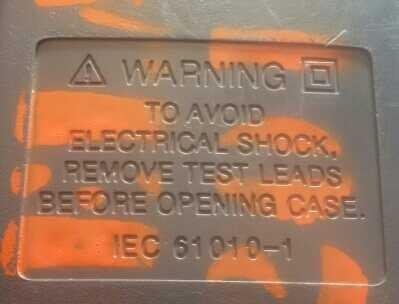Transformers

Transformers are electronic components that work at high working voltages so that they are often damaged. Damage to the transformer will cause the circuit or electronic equipment to not work at all. Why is that? Because if this component is damaged, the other components will not get current or voltage. We can do damage to the transformer by measuring it using a multimeter. The method of measurement can be done in two ways, namely by being given an electric voltage and without being given electricity. We can do one of the two ways above to determine whether the transformer is damaged or not. The following will be explained in each of the ways above.
How to measure a transformer that is given an electric voltage

Connect the transformer to a power source (make sure all connections are secure and connected properly).
Set the position of the multimeter switch on the AC AC position, because the voltage that we will measure is the AC voltage. To maintain the safety of the measuring instrument set the position of the switch at a voltage higher than the estimated voltage and voltage of the PLN. To measure the primary part set the Ac's volt position at 500 or 250.
The method of measurement can be done from the output and can also be from input. In this example we will start checking from the input. Begin by measuring the voltage in the electrical contact.
After making sure that the electrical contacts are voltage, check the primary transformer. (Due to the AC voltage, it's okay to test the reverse position between the black and red colors).

If there is tension at the primary, continue to take measurements on the secondary part. If there is no voltage, the contact cable and transformer cable are not good.
Perform voltage measurements on the secondary part. Do not forget to lower the ac volt position which is closer to the tension written on the secondary but try on it. if there is a voltage means the transformer is in good condition, otherwise if there is no voltage means the transformer is damaged.
Although the voltage at the output already exists, it is also necessary to measure the voltage with the body or chassis to ensure that there is no short circuit.
How to measure transformers without voltage
Make sure the tesled cable is in good condition and connected perfectly to the multimeter.
Set the switch position on the ohm meter passport. The installer can be set at 1 k or 100 x positions.
Connect the tesled to the primary part of the transformer (it's not upside down). If the needle meter moves means it's still good (temporary). If it does not move it means the windings have broken.
Measure the secondary part in the same way. If it moves, it means it's good and if it's silent, it means it's broken.




Measure the primary and secondary parts together to ensure there is no short circuit between the primary and secondary parts. If the needle moves means the transformer has been damaged (shorting) if it is still means the transformer is in good condition.
In the same way, also measure measurements from the primary / secondary to the chassis or body. If moving means shorting if silence means good
Likewise, how to do transformer measurements using a multimeter may have benefits.